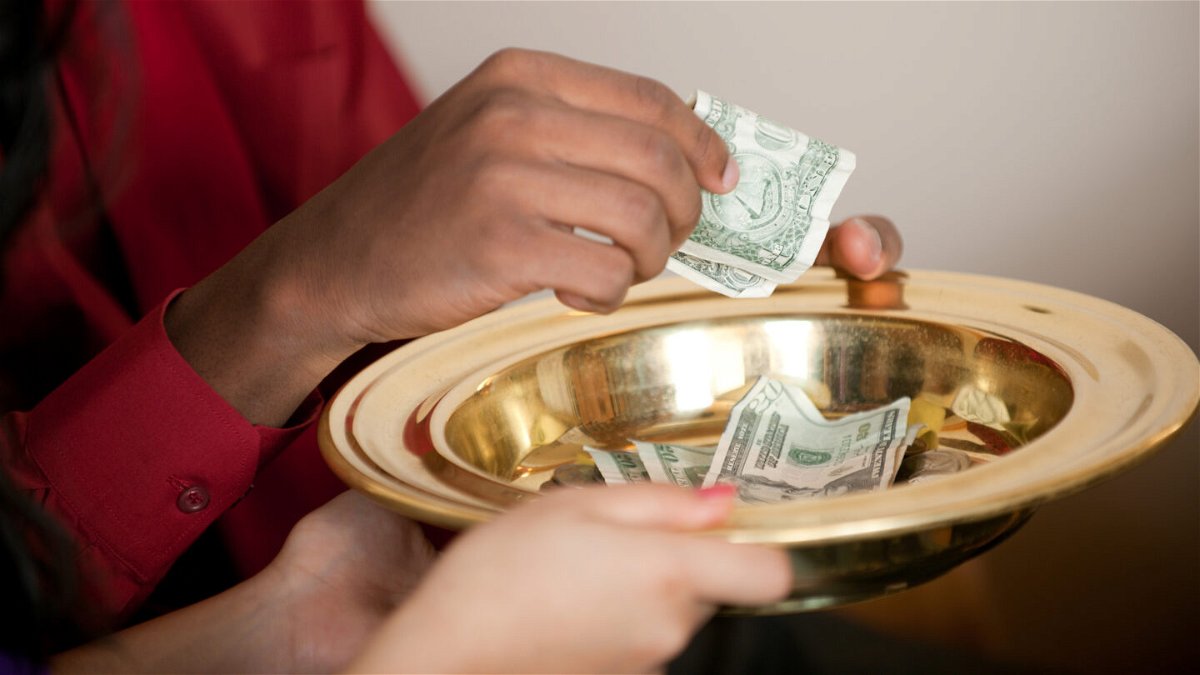A church is canceling people’s medical debt for pennies on the dollar. It wants others to join in

In March
By AJ Willingham, CNN
In March, Trinity Moravian Church in Winston-Salem, North Carolina, made a stunning announcement. For pennies on the dollar, the congregation had bought up $3.3 million of medical debt belonging to 3,355 local families. With bells ringing and confetti flying, the church held a “debt burning” ceremony marking the full forgiveness of these burdens.
This life-changing feat was accomplished with a little more than $15,000 in donations, organized through the church’s Debt Jubilee Project in partnership with RIP Medical Debt, a New York-based nonprofit. Through this project and others like it, more churches in the US are coming together to create outsized relief for debt-strapped members of their communities. Church leaders say debt forgiveness is a modern, but very effective way to do good — and it has a firm basis in scripture.
How thousands in donations can make a hundred times the difference
Programs like RIP Medical Debt leverage the processes by which some debt is collected. In general, if a debt is overdue, a third-party debt collector may buy the debt from the initial party, like a hospital or insurer, at a deeply discounted rate. Then, they will pursue the full value of the debt from the debt holder.
RIP Medical Debt says it works with partners to purchase these bundles of debt without pursuing the debt holders. “We buy debt in bundles, millions of dollars at a time at a fraction of the original cost,” its website explains. “People across the country receive letters that their debt has been erased. They have no tax consequences or penalties to consider. Just like that, they’re free of medical debt.”
RIP Medical Debt specifies that it tries to pinpoint debt bundles that will make the most difference to people, which usually means buying especially large amounts or debts from low-income families.
Churches and other institutions can create campaigns through debt relief systems like this, collecting donations that are used for the debt buy.
Why churches in particular are participating
Trinity Moravian Church is far from the first institution to initiate widespread medical debt relief. In 2019, Northview Church in Indiana paid off $4 million in local medical debt by asking its roughly 10,000 members to donate a just a few dollars each. Crossroads Church, based in Cincinnati, forgave $46 million in medical debt in 2020, reaching 45,000 people in the region.
“It just seemed like a good thing to do,” Brian Tome, senior pastor at Crossroads Church told CNN in 2020.
Nonreligious institutions harness the power of medical debt forgiveness, too, but there’s an extra biblical meaning to the gesture that drives churches to participate.
The Old Testament Book of Leviticus describes a “jubilee” that would be held every 49 or 50 years, during which debts were forgiven and slaves were freed in order to show the mercy of God.
“Medical debt is a modern form of slavery,” Rev. John Jackman, pastor of Trinity Moravian Church, told the Winston-Salem Journal.
Major Christian denominations like Catholicism and Episcopalianism have historically discussed the concept of “debt jubilees” as a way to address issues like poverty and inequality.
Jackman says he hopes more churches see the kind of impact they can make through such programs.
“We hope the medical system gets fixed someday but that’s beyond our pay grade,” Jackman told WXII. “But what we can do is what we’re doing now, buy some of the debt and forgive it.”
These “debt jubilees” resonate with the public, as well. After Trinity Moravian’s announcement went viral on social media, viewers of all walks of life commented that these were the kinds of gestures they want to see from religious institutions.
“I’m not a church goer, but I just read about your Debt Jubilee,” reads one comment on the church’s website. “This is how a church should be.”
About 3 million — or 1% — of Americans have medical debt in excess of more than $10,000, according to a 2022 report from the Peterson-KFF Health System Tracker. About 23 million people owe more than $250. According to the report, low-income families and people with disabilities or serious diseases like cancer tend to owe more. Together, people in the US owe an estimated $195 billion in medical debt.
The-CNN-Wire
™ & © 2023 Cable News Network, Inc., a Warner Bros. Discovery Company. All rights reserved.